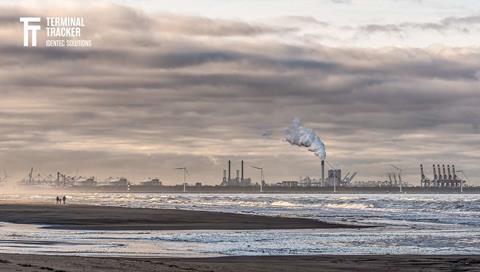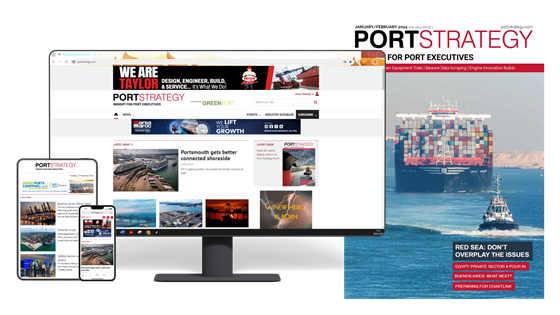The pace of change seems to be accelerating. Political, economic, and environmental instabilities also affect ports and the entire supply chain. Ports are contributing to and affected by diverse factors and must face a volatile landscape of technologies, demographics, and the Great Game for resources. Can ports contribute to a more controllable future?

Throughout history, politics and environmental preservation have been intertwined. Ancient societies like India and Rome recognised the importance of proper waste management, building complex sewer systems thousands of years ago. In the 17th century, Paris took a step forward in environmental protection by developing Europe’s first large-scale sewage system. Hygiene, sewage, housing, and national parks were all subject to regulation in the late 19th and early 20th centuries as the world began to perceive the importance of preserving natural resources. In the mid-20th century, the harmful effects of chemicals and pesticides were acknowledged, leading to regulations on hazardous substances and permitted emissions values. As natural resources became scarcer, the buzzwords of sustainability and sustainable development emerged, and environmental policy became a concern for not only governments but also the private sector, non-governmental organisations, and individuals.
The transport industry, and with it shipping, is one of the biggest causes of environmental problems. Here, in turn, the ports, in particular, are in demand, as they harbour great potential for improvement. To fully comprehend the environmental impact of ports, one must expand their scope beyond the immediate vicinity. It’s not only the port’s direct activities that contribute to the issue but also the effects of ships at sea and intermodal transportation. Air pollution from ships and transport, sewage and waste disposal in the ocean, and noise pollution disrupting wildlife and human health are all concerns.
Ports themselves are increasingly affected by the impacts of climate change, including rising sea levels, severe tropical storms, flooding, droughts, and extreme heat events. Failure to reduce emissions by 2100 could cost the shipping industry an additional $25 billion annually. These costs come from vessel losses, route changes, fuel consumption, and adapting ports for weather extremes, ranging from 30Mio USD to 200Mio USD per km2. Extreme weather stresses cooling systems and port equipment, causing disruptions.
Sustainable ports aim to meet current and future needs while preserving resources and minimising negative impacts. They go beyond just being green and also consider social and economic factors. Proposed solutions for addressing port pollution include decarbonisation through electrification and energy-saving measures, planting trees and greenery, providing collection facilities and drainage channels, preparing emergency plans and equipment for accidents, removing floating debris, optimising traffic and using quieter machines, improving the cold chain, reducing noise through ramp modification and barriers, and improving light pollution by using motion sensors, warm LEDs, and optimal lamp placement.
Decarbonisation targets eliminating CO2 emissions caused by human activity to limit global warming below 2°C above pre-industrial levels. Members across all industries aspire to become carbon neutral by 2050 to achieve even 1.5°C. CO2 significantly contributes to global warming, and reducing its production is crucial. Innovative technologies can provide a competitive advantage for ports to transport goods in an emission-efficient manner, and all stakeholders must coordinate strategies to achieve this.
To effectively reduce CO2 emissions, it’s crucial to prevent its production in the first place and use renewable sources for electricity. Electrification and automation in ports can optimise processes, improve worker safety, and reduce emissions. Regulations requiring 100% zero-emissions equipment by 2030 are being developed in California. Electrification often leads to higher automation levels, improving productivity and data monitoring – e.g. automated management of refrigerated containers.
The trend towards electrification in vehicle and equipment development isn’t just limited to road transport. In fact, automation is already a reality at ports, providing both decarbonisation benefits and optimised processes that save time and improve worker safety. According to a report on Container Handling Equipment (CHE) electrification, 60% of equipment is expected to be electric by 2030. Regulations on cargo handling equipment are also in the works, with California’s Sacramento State Air Resources Board (CARB) leading the charge towards 100% zero-emissions equipment by 2030, potentially reducing emissions of pollutants, air toxins, and greenhouse gases from 2026 onwards.
Significant strides have been made in providing shore power to vessels, even for short stays, with some ports implementing anti-idle laws to mandate its use. Shore power is a sustainable method of supplying electricity to a ship while docked, sourced from renewable energy. It reduces fuel consumption and air and noise pollution in the port, increases port competitiveness, and fosters better relationships with neighbouring communities. The shipping industry also uses the term “cold ironing,” originating from cooling iron machines when ships were powered by coal while in the harbour.
Electrification may be one aspect of many to stimulate a change of mindset and view on “unlimited” resources like air and water. But, in the end, it is our attitude as an industry that will make or break a successful evolution toward a sustainable economy.















